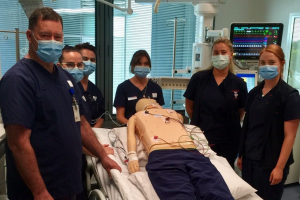Proactive pandemic planning in the design of the Royal Adelaide Hospital (RAH) has paid dividends, according to a recent research review.
The in-depth review of the RAH’s capabilities throughout the COVID-19 response, published in Australian Health Review, detailed the many features built into the RAH long before its first COVID-19 patient arrived on the 1st of February 2020.
Planning ahead
Disaster readiness was a key consideration when the design of the hospital began, after plans to rebuild the RAH were announced in 2007. This capability was key to allow the RAH to continue to provide a world-class standard of care despite the complexities of the pandemic.
A goal of the new RAH was to provide a resilient facility that could respond to any type of disaster event while continuing to provide core clinical services.
Infrastructure design features were incorporated to cover natural disasters and include an ‘Island mode’, ensuring the hospital can remain fully functional without any external support for utilities.
Pandemic-ready
Previous infectious disease outbreaks of SARS and H1N1 informed the need to include pandemic design features, known as ‘pandemic mode,’ which ensure areas can be contained and segregated.
This included installing negative pressure rooms, which prevent air escaping from the room, and full quarantine rooms in the emergency department, the intensive care unit and recovery bays.
Inpatient rooms are also supplied with 100% fresh air from outside. These air flow design features have all been important infection control measures for the COVID pandemic.
Built-in personal protective equipment (PPE) stations are included on the external corridor for each room, enabling people to put on PPE before entering any single room.
A 7-step scalability plan was also developed to allow for a tailored response to a pandemic, depending on its circumstances. This allowed the staff to provide isolated cubicles in the emergency department and ratchet up the response incrementally, by adding further cubicles and wings as required.
Pandemic mode, scalability, single rooms, and several other features made the RAH the ideal COVID-receiving hospital for the state.



